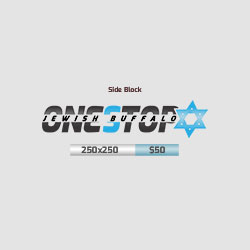Bezalel’s Ancestry
The last two sections of the Book of Shemos (Vayakhel and Pikudei) detail Moses’ instructions for the construction of the Mishkan, the portable Sanctuary.
The Torah introduces Bezalel, the Mishkan’s primary architect, to the Children of Israel with the following words:
“See G-d has proclaimed by name, Bezalel son of Uri son of Chur, of the tribe of Judah.”
We can understand why it mentions Bezalel father’s name, Uri. Identifying a person by his father is a common occurrence in the Torah. But why does the Torah make a point of telling us that his grandfather was Chur.
This addition of the grandfather seems to suggest that there was something unique about Bezalel’s lineage, and that distinction was connected to his grandfather Chur.
Chur was the Son of Miriam
Rashi, indirectly, answers this question when he writes: “Chur was the son of Miriam.”
We all know that Miriam was the savior of Moses and the leading Midwife who defied Pharaoh’s orders to kill the newborn males. Miriam also encouraged her parents to remarry after they had separated, which example was followed by the entire Jewish nation. Miriam was one of the three leaders in the desert and in whose merit the Israelites, miraculously, had water. Miriam was a prophetess of note.
Chur’s greatness was truly his mother’s greatness. Miriam bequeathed her qualities to her son Chur, who in turn, passed them down to his son Uri, who bequeathed them to Bezalel, which qualified him to build the Sanctuary for G-d.
It is now clear why the Torah traces Bezalel back to Chur; it is to connect him to Miriam.
Three Times
This is not the first time that Chur is mentioned in the Torah. There are two earlier verses that mention his name and Rashi makes the same observation that Chur was son of Miriam.
When the Amalekites attacked the Jews during the exodus from Egypt, Moses went up to the mountain to pray for victory, accompanied by Aaron and Chur. There too Rashi comments that Chur was the son of Miriam.
Again, before Moses climbed up to the mountain top to receive the Tablets he informed the people that if they had any questions or needed justice during his absence, they should turn to Aaron and Chur. Again Rashi adds the same comment: “Chur was the son of Miriam.”
Why did Rashi have to mention the same biographical fact three times: at the war with Amalek, Moses’ absence and the induction of Bezalel as the architect for the Mishkan?
The answer lies in the premise that there are three areas in life in which women distinguish themselves: prayer, faith and creating a sanctuary for G-d.
Women’s Power of Prayer
Let’s return to the war against Amalek. While Joshua led the Jewish forces into battle with Amalek, Moses, Aaron and Chur ascended a mountain. The Torah then states that Moses lifted his hands and, when he did, the Israelites were victorious. To keep Moses’ arms aloft as he tired, Aaron and Chur held his hands.
The Mishnah asks rhetorically: “Was it Moses’ hands that won the battle or lost the battle? Rather, this teaches you: As long as Israel looked heavenward and subjected their heart to their Father in Heaven – they would prevail…”
From the above it emerges that Chur (as well as Aaron) assisted Moses in his reaching for the heavens.
One of the main models of and sources for the laws of prayer is the moving prayer of Chanah, the mother of the prophet Samuel. What is unique about her prayer was her persistence. She exhibited such determination and stubbornness that Eli, the high Priest, accused her of being intoxicated. The Rebbe explains that it doesn’t mean that he suspected her of becoming drunk from alcoholic beverages. Rather, he felt that she was intoxicated with her needs and that her prayers were too passionate. Her response to that charge was “I was pouring out my heart to G-d.”
When Chur is mentioned for the first time in the context of aiding Moses with his prayer, Rashi intimates that Chur got his power from his mother Miriam. Keeping Moses’ hands high is a metaphor for the persistence one must have in prayer, a power exhibited primarily by women.
Women’s Faith
The second trait women are known for is their faith. The women in Egypt never lost their faith that one day they would be redeemed. They doggedly encouraged their husbands to continue family life, which produced legions of Jews. And all of this was due to Miriam’s influence.
But where did their faith distinguish itself even more sharply from the faith of their male counterparts? It was their refusal to have anything to do with the contributions for and the creation of the Golden Calf. While the natural faith of every Jew embedded in their souls is always intact, it can be covered up by external forces. Women, we are taught in Chassidic literature, have a greater capacity than men to not allow their faith to be covered up. Even when Moses’ apparent failure to return from Mount Sinai did not dampen the faith of the women that he, G-d’s faithful servant, would return.
When the Jews started to agitate for the construction of the Golden Calf, our Sages teach us that Chur strenuously objected and he was murdered. Chur gave his life to protect the Jewish people from a serious breach of faith in one G-d. This superior trait of faith was bequeathed to Chur by his mother Miriam.
Thus Moses, before he ascends the mountain, puts Chur in charge, knowing that if there was a need for someone to defend the faith in his absence, it would be someone who inherited that passionate faith from Miriam.
Later, when the Spies slandered the Land of Israel and the men cried, the women rejected that reaction. They never lost their faith in G-d’s promise to bring them to a Land of Milk and Honey.
Women’s Power to Create a Sanctuary
The third trait in which women distinguish themselves is creating a Sanctuary for G-d. The Sanctuary was a place in which, and through which, G-d’s presence could find expression in our physical world. The Midrash reveals to us what G-d’s purpose was with the creation of the universe: “G-d wanted a dwelling-place in the lowest of realms.” G-d wants us to invite Him into our physical existence so that G-d feels comfortable in our world. The Mishkan, and subsequently, the Bais Hamikdash, is the paradigmatic home for all of creation.
Women are more suited than men to create a home. Anyone can build or purchase a house. But a woman is especially suited to turn her house into a home; a residence in which G-d is welcome. When a woman lights her Shabbat and Holiday candles, she kindles a spiritual light that illuminates and warms the entire home. While a woman can pursue a career outside of her home, her main accomplishment is creating a home for G-d; first and foremost in her own house.
Thus, when Bezalel constructed the first Sanctuary, the Torah alludes to the power he had to create a home for G-d in the physical world; that it was inherited from his grandfather Chur, who was, in turn, endowed by his mother, Miriam.
The Power of Women to Bring the Redemption
Even as we stand on the threshold of the Final Redemption, many people have given up hope because of the delay in Moshiach’s coming.
The women of our generation, like Miriam of the Exodus, inspire us to keep on praying and not lose faith in the imminent coming of Moshiach, who will inspire us to complete G-d’s Master Plan of having a dwelling-place in our physical world.


